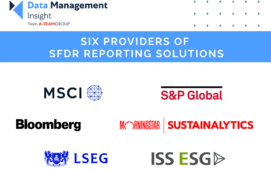Online business information provider Alacra is aiming to help financial firms solve regulatory and compliance problems, and get ready for next year’s introduction of the global legal entity identifier (LEI), with a database of clean legal entity data attributes covering towards 200,000 global business entities.
The company’s so-called Alacra Authority File (AAF) expands on publically available data associated with the Commodity Futures Trading Commission’s (CFTC) Interim Compliant Identifiers, or CICIs, and is expected to do the same for the LEI once its final format is decided and a global LEI system is prepared for introduction in March 2013.
The AAF includes data on large financial institutions’ low-risk core clients and counterparties, leaving the institutions to manage high-risk entities. To be included in the file an entity must have a security listed on a global exchange; be rated by Moody’s, S&P, Fitch, or A.M. Best; be regulated by one of 30 global regulators selected by Alacra; or have been assigned a CICI or, when established, an LEI.
According to Steve Goldstein, CEO, “It’s one problem getting the data correct once. It’s an entirely different and larger problem to keep reference data accurate over time. While the accuracy of our data is unsurpassed, it is delivering changes to the data that makes the Alacra Authority File valuable. While other data vendors are taking in entities and tracking them one-by-one, we have taken a universe of entities and we track them programmatically to create a white-list of low-risk entities. Reference data changes are a compliance and risk problem, so we are providing a cost-effective way to track entities and changes. This solves a big part of the problem and banks can then focus on high-risk entities.”
As well as providing reference data, the AAF can map the entities it carries to over 40 commonly used industry standard entity and industry identifiers. Using this functionality Alacra suggests the AAF could be used to reduce reference data silos, accelerate know-your-customer onboarding and remediation, and prepare organisations for the LEI.
Goldstein says the AAF reference data enhances the six or seven data points associated with a CICI with data such as parentage, a regulator if an entity is regulated and a BIC code if one is allocated to the entity.
Similarly, the company will enhance LEI reference data and alert customers to changes such as name and address information, regulatory status, listing status and rating status.
Alacra aggregates data from thousands of web-based sources and uses a global research team to populate its database, with changes to reference data being alerted using proprietary monitoring software. The company delivers reference data on a daily basis, but it is also possible for reference data analysts to query the data online, ftp files to be sent from the database and consumed in downstream applications such as compliance, and data to be configured to give clients only data relevant to the entities they use.
The service is offered on a subscription basis with costs ranging from $75,000 a year for an entry-level service up to about $200,000 a year for a service including entity mapping. The service is available immediate and Goldstein says it has attracted interest and its first two clients, one a global financial institution, the other a financial markets services provider.
He notes reference data vendors such as Avox, CounterpartyLink, Thomson Reuters and Bloomberg as potential, but not direct, competition, saying: “Our value proposition is different. We offer reference data on 200,000 entities from a global perspective and on behalf of everyone. We keep track of all changes to reference data and we can map an entity to over 40 industry codes. We hope the return on investment will be less time spent on low-risk entities, a greater focus on high-risk entities that can create regulatory risk and support for firms getting their houses in order first for the CICI and then for the LEI.”
Subscribe to our newsletter




